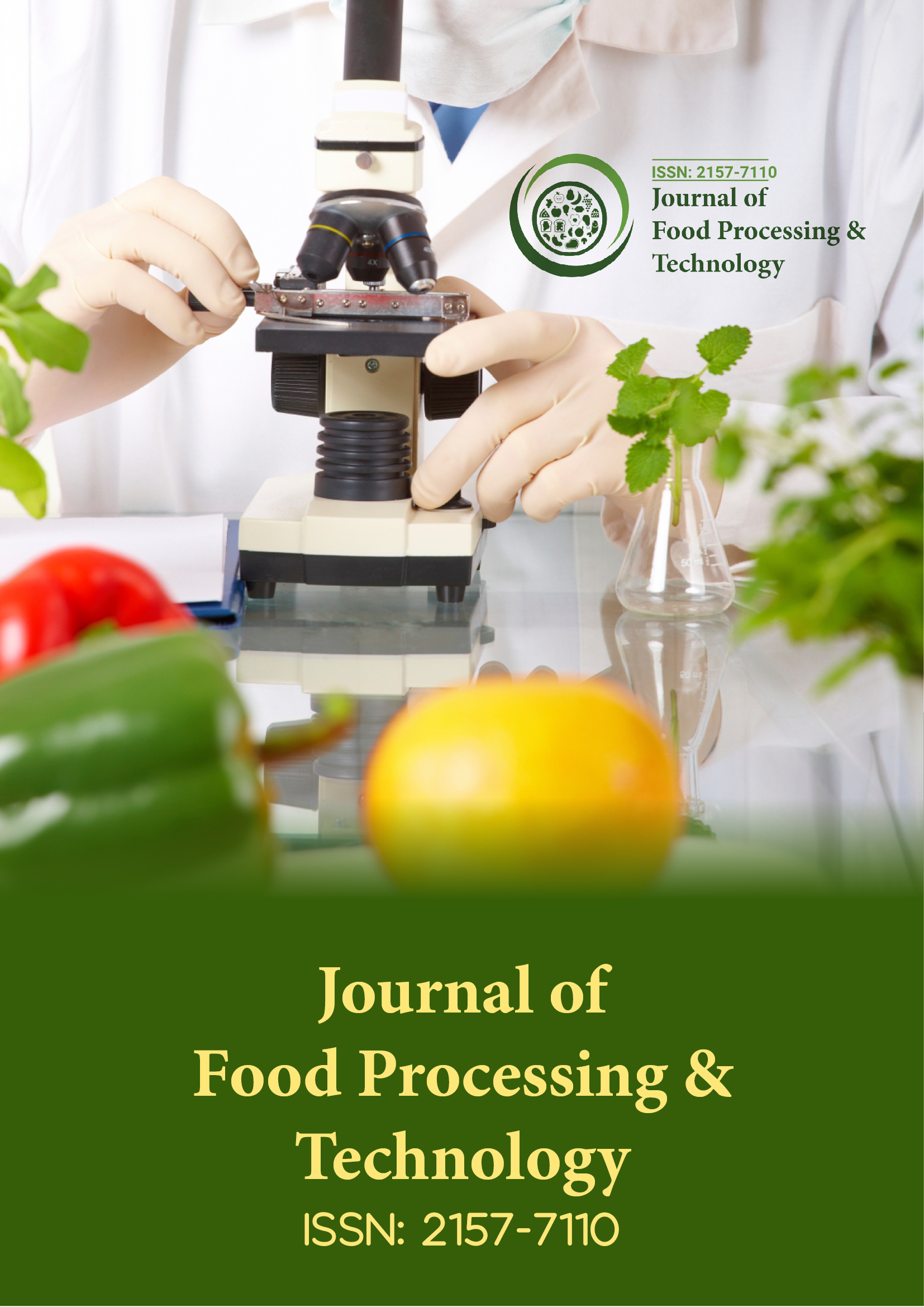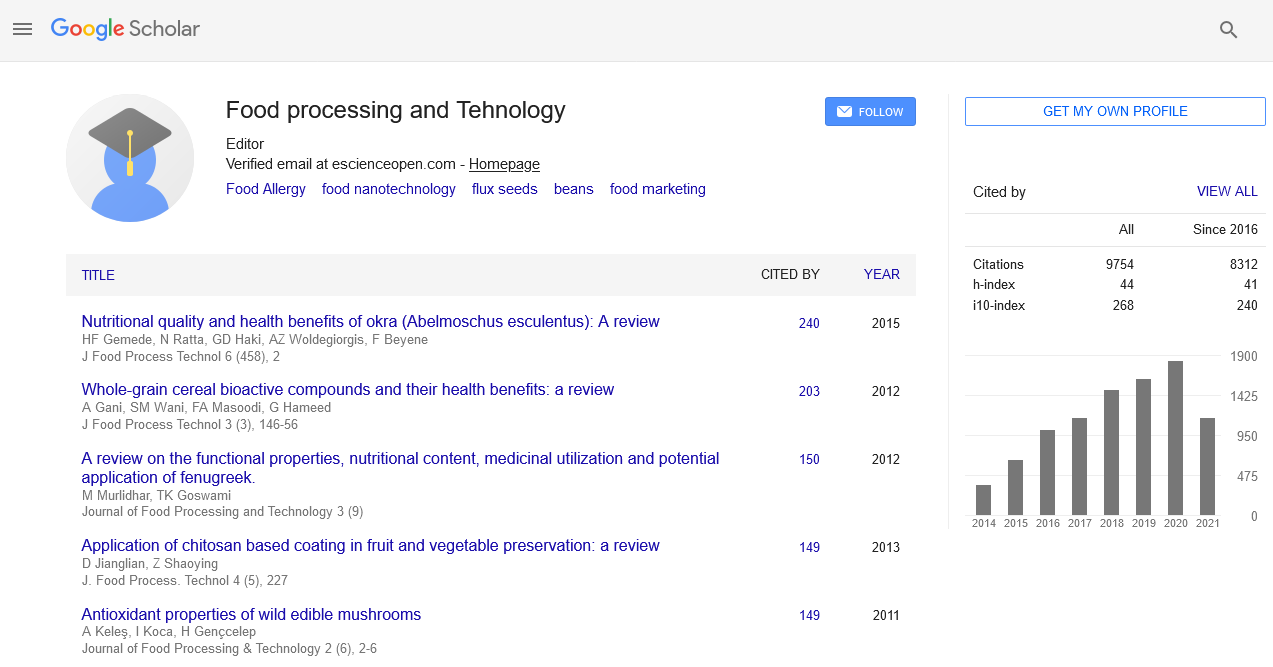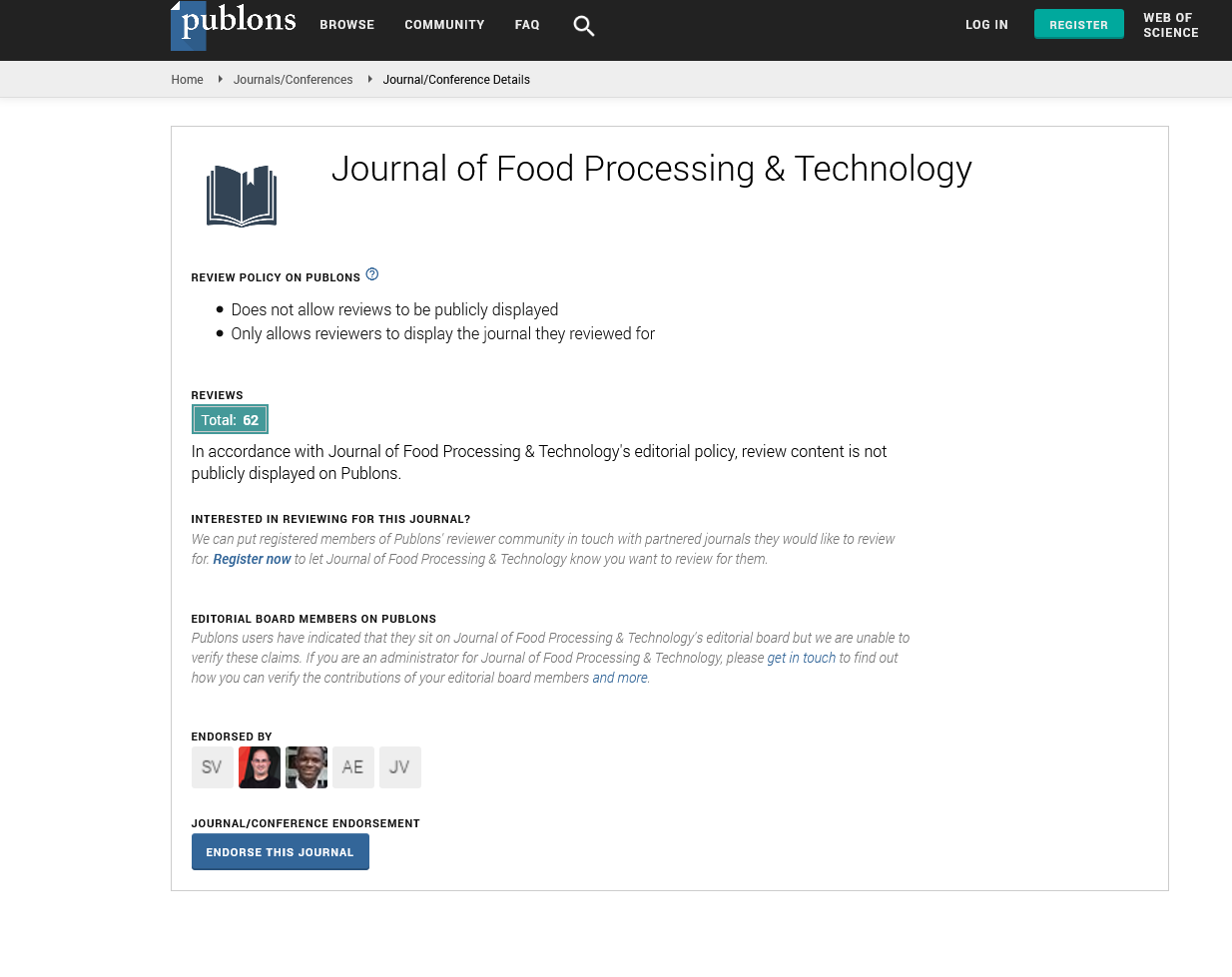Indexed In
- Genamics JournalSeek
- Academic Keys
- JournalTOCs
- China National Knowledge Infrastructure (CNKI)
- Access to Global Online Research in Agriculture (AGORA)
- Centre for Agriculture and Biosciences International (CABI)
- RefSeek
- Directory of Research Journal Indexing (DRJI)
- Hamdard University
- EBSCO A-Z
- OCLC- WorldCat
- Scholarsteer
- SWB online catalog
- Publons
- Euro Pub
- Google Scholar
Useful Links
Share This Page
Journal Flyer

Open Access Journals
- Agri and Aquaculture
- Biochemistry
- Bioinformatics & Systems Biology
- Business & Management
- Chemistry
- Clinical Sciences
- Engineering
- Food & Nutrition
- General Science
- Genetics & Molecular Biology
- Immunology & Microbiology
- Medical Sciences
- Neuroscience & Psychology
- Nursing & Health Care
- Pharmaceutical Sciences
A parallel study of freeze concentration and vacuum evaporating concentration of apple juice
20th Global Summit on Food Processing, Safety & Technology
November 06-08, 2017 | Las Vegas, USA
Frank G F Qin
Donguang University of Technology, China
Keynote: J Food Process Technol
Abstract:
Apple juice is one of the most common fruit juices, and its concentrate is an important product in traded market. Some representative technical indexes of apple juice (AJ), such as VC, aromatic substance, and colour value are compared in the processes of freeze concentration (FC) and evaporating concentration (EC). A 2.5-liter lab scale freeze concentrator with instrumentation standard and a vacuum evaporating concentrator were utilized in this research. The FC working procedure was cooling, freezing/making suspension ice from solution, ice crystallization/re-crystallization, compressing ice to form porous packed ice bed, washing-separating ice from the mother-liquid, discharging the concentrate. The concentration ratio in single trial is about 1.8 for (e.g. from 10% to 18%); 4 times of trial obtains highest achievable concentration of about 50 Brix; in which the VC retention rate is 93%; aromatic substance retention rate is 90.5%; and the colour value, which is represented with the absorbance at 420 nm increases about 2.1%. A parallel study of vacuum evaporating concentration of AJ shows that the VC retention rate was about 52%, aromatic substance retention rate was 26% and absorbance increases 32% in this study. The total solute content in separated ice was found ~100 ppm, so the solute loss in ice was 0.01% correspondingly. The freezingpoint depression curves/data of commonly consumed liquid foods, such as skim milk, orange juice, wine, beer, egg whey etc., are integrated into the program of the PLC controller, so that the instrument detects the solution concentration according to its freezing point (temperature) and control the FC process to make it work as an intelligent instrument for the purpose of lab research and development.
Biography :
Frank G F Qin has obtained his PhD degree in Chemical Engineering in South China University of Technology in 1990. He has obtained a "National Natural Science Foundation of China” Youth Foud" and a "National Natural Science Foundation of China" in the period of 1990-1996, when he was working in university, his research was focused on industrial crystallization process, instrumentation and control. In 1997-1999, he was a Visiting Scholar in Massy University, New Zealand, focusing on the application of membrane micro-filtration in dairy industry. He became a Post-Doc Research Fellow in the University of Auckland, New Zealand in 2000-2004, and then served as a R&D Engineer in Uniservices, Ltd., New Zealand, in 2004-2008. Then he has returned to China and holds a position of Professor in Dongguan University of Technology, China, from 2009 to the present. During the years, freeze concentration of food liquid has been one of the focus of his research.


